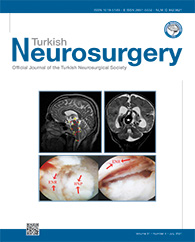2?Sapienza? - University, Department of Human Neuroscience, Rome, Italy
3University of Milan, Residency Program in Orthopedics and Traumatology, Milan, Italy
4University of Milan, Department of Biomedical Sciences for Health, Milan, Italy DOI : 10.5137/1019-5149.JTN.33958-21.1 AIM: To describe the history of the anterior approach to the lumbar spine from the beginning to the minimal invasive techniques that the authors have developed, and to discuss its advantages and drawbacks.
MATERIAL and METHODS: The authors collected published data on the evolution of the anterior approach in the lumbar spine, and described its potential in different pathologies focusing on minimally invasive techniques.
RESULTS: Several successful techniques of anterior lumbar approach have been developed over the years, leading to a progressive less invasive anatomical exposure of the spine. Anterior approaches of the lumbar spine gained popularity as an alternative to posterior routes in the management of tumors, infections, traumas, degenerative or deformity diseases and as a salvage procedure after posterior surgery.
CONCLUSION: Advantages of the retroperitoneal anterior approach of the lumbar spine are well accepted: it preserves the anatomical structures of the abdomen and posterior tension band, avoiding muscle dissection. The implantation of lordotic cages with larger footprint improves local lordosis and fusion rate even in revision surgery. Drawbacks of traditional retroperitoneal approaches may be: vascular injury, deep venous thrombosis, risk of retrograde ejaculation in male in case of L5-S1 dissection. Therefore, several minimal invasive techniques have been developed to decrease the risks related to the traditional approaches. However, a long learning curve is required to achieve good skills and to manage possible technical concerns and complications.
Keywords : Anterior lumbar interbody fusion, Video assisted, Lumbar revision surgery, Failed back syndrome, Complications




